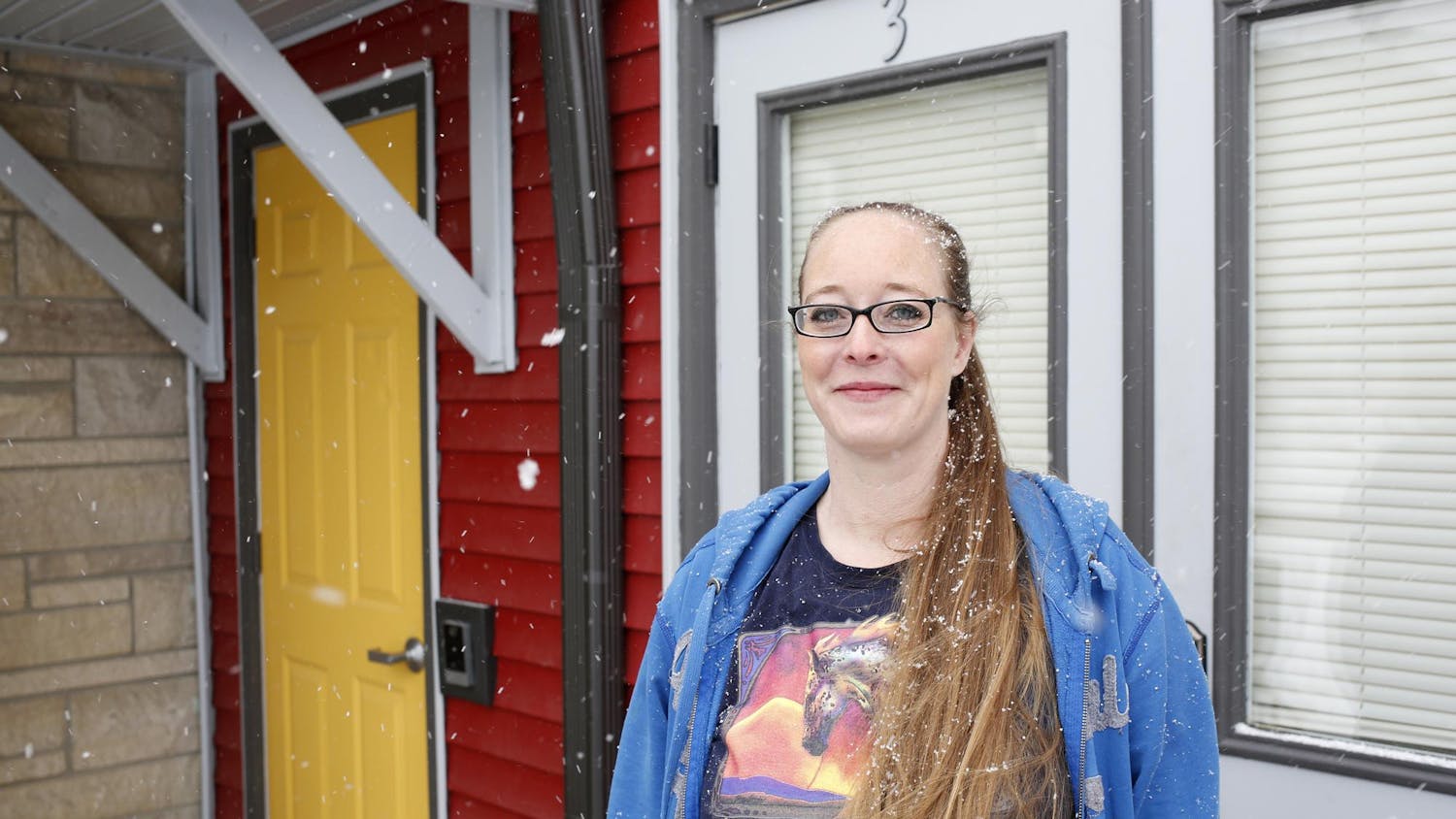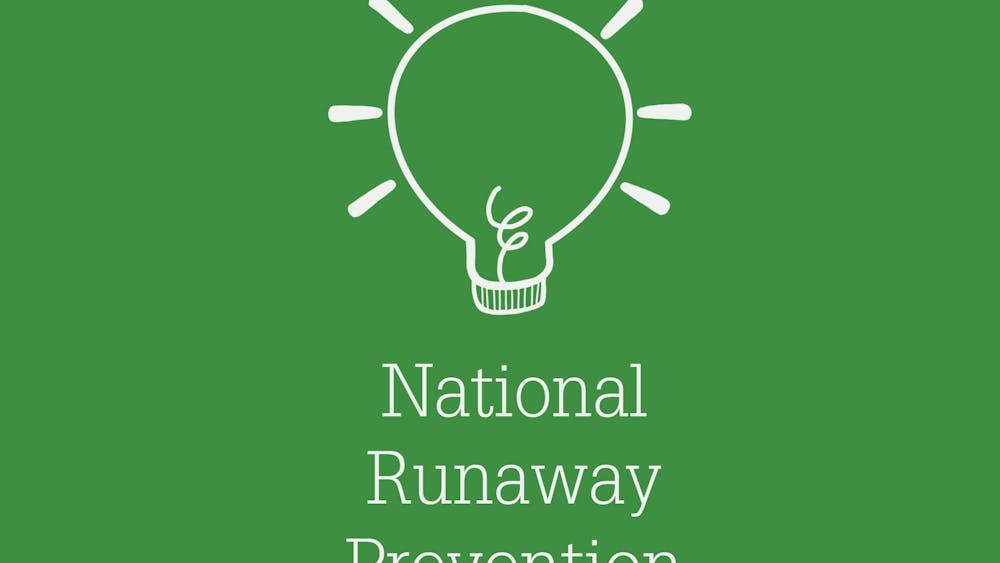New wings. That’s the message inscribed on the gates of Middle Way House. That’s what the clients of the shelter for domestic and sexual violence victims strive for.
Middle Way House offers 24-hour crisis intervention, emergency shelter, personal advocacy, legal advocacy, support groups, preventive programs and affordable housing — all free to clients.
It is this accessibility and prolonged care that make Middle Way House one of six nationally recognized programs for domestic violence. But its service comes at a price.
The recession hit nonprofit organizations hard financially. Nationally, 41 percent of nonprofits said their number-one issue was achieving long-term financial sustainability, according to the 2013 Nonprofit Finance Fund survey.
Statewide, 34 percent of Indiana’s domestic violence programs experienced a decrease in government funding, according to the National Network to End Domestic Violence’s 2013 report.
Middle Way is no exception.
“We are experiencing decreases pretty much across the board,” said Toby Strout, executive director of Middle Way House.
These financial cut backs have resulted in a reduction of staff for Middle Way, Strout said. Due to unfunded mandates instated by state government, Middle Way had to remove its overnight volunteer staff despite having paid staff back up and approval from their insurance company.
These state unfunded mandates regulate this, as well as personnel policies, insurance levels, what programs Middle Way offers and how they are run. However, they do not provide funds to pay full-time employees to fulfill these requirements. As a result, Middle Way relies heavily on their volunteers.
“Funds are short everywhere when you’re looking at nonprofits,” said Debra Morrow, Middle Way House community service coordinator. “There is no way that Middle Way House could do the work without the volunteers.”
According to the Middle Way 2012 annual report, the organization trained 370 volunteers who donated 27,676 hours of their time to make the shelter’s programs successful. These volunteers produce not only notable results but also a large financial break for Middle Way. In 2012, $277,000 was saved in salaries.
Roughly 60 to 70 percent of Middle Way volunteers are IU students through the University’s Service-Learning Program.
“I think that as young leaders, we can go in with an optimistic attitude and change the perception of domestic violence and make a difference,” said Blair Heidenreich, a Middle Way volunteer and junior social services student.
Despite the volunteer and community support, it’s difficult for domestic violence programs to balance the increasing demand for services and decreasing government funds.
In 2007, the National Network to End Domestic Violence reported that, nationally, 61 percent of nonprofits’ income came from government grants.
In the 2011-12 annual report, government grants only covered 34 percent of nonprofits’ income.
The Middle Way 2012 financial report shows that 33 percent of its income is supported by grants from the federal, state and local government. This leaves a difference of more than $1 million dollars for Middle Way to make up through private foundations, fundraising events and donor solicitation.
This decline in funding coincides with a rise in need.
Coast-to-coast, the Nonprofit Finance Fund found that 80 percent of nonprofits noticed an increase in demand for services in 2013. Fifty six percent of these nonprofits also reported that they were unable to meet this increased demand.
Middle Way is no different. Its 2012 annual report shows that of the 55 women who requested emergency shelter, 24 were denied because of lack of availability.
“We’re still at capacity in the majority of our programs statewide,” said Laura Berry, executive director of Indiana Coalition Against Domestic Violence. “We’re still struggling to meet the needs of the requests of our population.”
In 2013, the Indiana Coalition Against Domestic Violence found that 601 requests for shelter statewide were not met because of capacity limits.
In just one day, 298 requests for services could not be met in Indiana because of a lack of resources.
The economic recession plays a role in both of these issues. Fiscal cutbacks resulted in less money coming into nonprofits from both the government and the
community.
This financial strain created extra stress at home, which caused increased assault rates, Berry said.
“During those economic downturns a couple years ago we were seeing some of our highest numbers,” Berry said.
The threat of unemployment or homelessness also resulted in victims staying longer in shelters. From 2009 to 2011, the length of shelter stays increased by 18,419 days statewide, according to the Indiana Coalition Against Domestic Violence.
The federal government only funds the first 30 days for victims in emergency shelters, according to the Indiana Coalition Against Domestic Violence said.
The longest stay in the Middle Way emergency shelter has been eight months.
Unlike most programs, Middle Way doesn’t have a time limit on how long clients can stay, they said.
Middle Way doesn’t believe in limiting its clients, it believes in empowering them, according to its mission statement.
“It’s the woman who needs to understand what she needs,” said Dorothy Granger, head of Middle Way marketing and communications. “We don’t tell the women what to do. We will help them do what they know they need to do.”
In 2012, Middle Way’s rate of domestic violence victims returning to their violent relationships was 13 percent. This is compared to the national return rate of 55 to 70 percent, Granger said.
“In the perfect world we would work ourselves out of jobs,” Morrow said. “We wouldn’t be needed anymore and that would be wonderful, but that’s a bigger societal issue.”
Domestic violence increases while funding decreases
Get stories like this in your inbox
Subscribe





